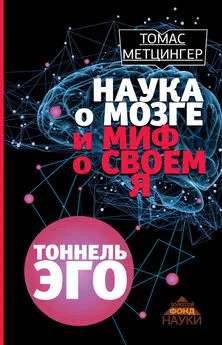Томас Гилович - Наука мудрости
- Название:Наука мудрости
- Автор:
- Жанр:
- Издательство:Индивидуум паблишинг
- Год:2019
- ISBN:978-5-6040721-7-2
- Рейтинг:
- Избранное:Добавить в избранное
-
Отзывы:
-
Ваша оценка:
Томас Гилович - Наука мудрости краткое содержание
Эта книга – для всех, кто интересуется психологией и социальным поведением людей. Она будет полезна и специалистам: исследователям, преподавателям и практикам.
Наука мудрости - читать онлайн бесплатно ознакомительный отрывок
Интервал:
Закладка:
19. Цитата из Франклина. The Founders’ Constitution , Vol. 4, Art. 7, Document 3. Retrieved from http://press-pubs.uchicago.edu/founders/documents/a7s3.html. Farrand, M. (ed.). (1937). The records of the Federal Convention of 1787 (Rev. ed.). New Haven, CT: Yale University Press.
20. Цитата из Берлина. Berlin, I. (1981). Notes on prejudice. http://www.nybooks.com/articles/archives/2001/oct/18/notes-on-prejudice.
21. Оценка роли тенденциозности и уникального опыта. Ehrlinger, J., Gilovich, T., & Ross, L. (2005). Peering into the bias blindspot: People’s assessments of bias in themselves and others. Personality and Social Psychology Bulletin, 31 , 680–692.
22. Бак о критике в свой адрес во время Мировой серии. People think I’m biased no matter who’s in the World Series. (2011, October 18). Groller’s Corner. Retrieved from http://blogs.mcall.com/groller/2011/10/buck-on-world-series-criticism-people-think-im-biased-no-matter-whos-in-the-world-series.html
23. Еще одна цитата из Бака. Burns, A. (2012). Joe Buck knows that people think he is biased for the Cardinals, doesn’t care. Retrieved from http://withleather.uproxx.com/2012/10/joe-buck-knows-that-people-think-he-is-biased-for-the-cardinals-doesnt-care#ixzz2Fe4fDNbE
24. Восприятие степени тенденциозности СМИ. Vallone, R.P., Ross, L., & Lepper, M.R. (1985). The hostile media phenomenon: Biased perception and perceptions of media bias in coverage of the “Beirut Massacre”. Journal of Personality and Social Psychology, 49 , 577–585.
25. Вкусы могут отличаться. Shaw, G.B. (1948). Man and superman . New York: Dodd, Mead.
26. Мудрость толпы. Lorge, I., Fox, D., Davitz, J., & Brenner, M. (1958). A survey of studies contrasting the quality of group performance and individual performance, 1920–1957. Psychological Bulletin, 55 (6) , 337–372.
27. Мудрость пар. Liberman, V., Minson, J.A., Bryan, C.J., & Ross, L. (2011). Naive realism and capturing the “wisdom of dyads.” Journal of Experimental Social Psychology, 48 , 507–512. Minson, J., Liberman, V., & Ross, L. (2011). Two to tango: The effect of collaborative experience and disagreement on dyadic judgment. Personality and Social Psychology Bulletin, 37, 1325–1338. Jacobson, J., Dobbs-Marsh, J., Liberman, V., & Minson, J.A. (2011). Predicting civil jury verdicts: How attorneys use (and mis-use) a second opinion. Journal of Empirical Legal Studies, 8 , 99–119. Soll, J. B., & Larrick, R. P. (2009). Strategies for revising judgment. Journal of Experimental Psychology: Learning, Memory and Cognition, 35 , 780–805. Yaniv, I. (2004). The benefit of additional opinions. Current Directions in Psychological Science, 13 (2) , 75–78.
2. Сила обстоятельств
1. Исследование с плакатом «Осторожнее за рулем». Freedman, J.L. & Fraser, S.C. (1966). Compliance without pressure: The foot-in-the-door technique. Journal of Personality and Social Psychology, 4 , 196–202.
2. Семинаристы. Darley, J.M., & Batson, C.D. (1973). From Jerusalem to Jericho: A study of situational and dispositional variables in helping behavior. Journal of Personality and Social Psychology, 27 , 100–119.
3. Военные облигации. Cartwright, D. (1949). Some principles of mass persuasion: Selected findings of research on the sale of United States War Bonds. Human Relations, 2 , 253–267.
4. Johnson, E.J. and Goldstein, D. (2003) Do defaults save lives? Science, 302 , 1338–1339. Рисунок воспроизведен с разрешения Американской ассоциации содействия развитию науки.
5. Пенсионные программы по умолчанию. Beshears, J., Choi, J.J., Laibson, D. & Madrian, B. (2008). The importance of default options for retirement saving outcomes: Evidence from the USA. In: S.J. Kay &T. Sinha (eds.), Lessons from pension reform in the Americas (pp. 59–87).New York: Oxford University Press.
6. История Левина. Marrow, A.F. (1969). The Practical Theorist: The Life and Work of Kurt Lewin . New York: Basic Books, Inc.
7. Уклонение от налогов в Греции. Artavanis, N., Morse, A. & Tsoutsoura, M. (2012). Tax evasion across industries: Soft credit evidence from Greece. Unpublished manuscript. Цит. по: Greeks observe pre-election ritual of tax dodging. (2012, June 6). Los Angeles Times.
8. Уклонение от налогов в США. U.S. Department of Treasury. (2009). Update on reducing the federal tax gap and improving voluntary compliance . Washington, DC: Author. Retrieved from: http://www.irs.gov/pub/newsroom/tax_gap_report_-final_version.pdf.
9. Место заверяющей подписи. Shu, L., Mazar, N., Gino, F., Ariely, D. & Bazerman, M. (2012). Signing at the beginning makes ethics salient and decreases dishonest self-reports in comparison to signing at the end. Proceedings of the National Academy of Sciences, 109 (38) , 15197–15200.
10. Статистика по ожирению. Centers for Disease Control. (2010). National obesity trends . Washington Post , p. A19. http://www.washingtonpost.com/wpdyn/content/article/2010/04/29/ AR2010042903669.html
11. Статистика по диетам. Dieting on a budget. Consumer Reports; http://www.consumerreports.org/cro/2012/04/dieting-on-a-budget/index.htm. Nibbles: Survey shows 41 percent of Americans are dieting. Calorielab, retrieved 2012–08–03. http://calorielab.com/news/2007/05/08/nibbles-survey-shows-41-percent-of-Americans-are-dieting/.
12. Изменение внешних условий приема пищи. Wansink, B. (2006). Mindless eating: Why we eat more than we think . New York: Bantum.
13. Размер тарелок. Van Ittersum, K. & Wansink, B. (2012). Plate size and color suggestibility: The Delboeuf illusion’s bias on serving and eating behavior. Journal of Consumer Research, 39 , 215–228.
14. Исследования Милгрэма. Milgram, S. (1974). Obedience to authority. An Experimental View . New York: Harper.
15. Эксперимент с придумывающим вопросы и отвечающим. Ross, L., Amabile, T.M., & Steinmetz, J.L. (1977). Social roles, social control, and biases in social-perception processes. Journal of Personality and Social Psychology, 35 , 485–494.
16. Эссенциализм («сущностная» интерпретация мира). Cimpian, A., & Salomon, E. (2014) The inherence heuristic: An intuitive means of making sense of the world, and a potential precursor to psychological essentialism. Behavioral and Brain Sciences, 37 , 461–527.
17. Рефлекторный характер убеждений: Gilbert, D.T. (1991). How mental systems believe. American Psychologist, 46 , 107–119.Gilbert, D.T. (2006). Stumbling on happiness . New York: Knopf.
18. Ураган «Катрина». Stephens, N.M., Hamedani, M.G., Markus, H.R., Bergsieker, H.B., & Eloul, L. (2009). Why did they “choose” to stay? Perspectives of Hurricane Katrina observers and survivors. Psychological Science, 20 , 878–886. Shapiro, I. & Sherman, A. (2005). Essential facts about the victims of Hurricane Katrina . Washington, DC: Center for Budget and Policy Priorities.
19. Неимущие. Mullainathan, S. & Shafir, E. (2013). Scarcity: Why having too little means so much . New York: Times Books.
20. Джефферсон. Finkelman, P. (2012, November 30). The monster of Monticello. New York Times .
21. Исследования Мишела. Mischel, W. (1968). Personality and Assessment . New York: Wiley. Mischel, W. (2004). Toward an integrative science of the person. Annual Review of Psychology, 55 , 1–22. Mischel, W. (2014). The Marshmellow Test . New York: Little-Brown.
3. Что как называется
1. Рузвельт на церемонии подписания. http://www.ssa.gov/history/
2. Рузвельт о плане Бевериджа. Perkins, F. (1946). The Roosevelt I Knew . New York: Viking Press.
3. «Уолл-стрит» и «Сообщество». Liberman, V., Samuels, S.M. & Ross, L. (2002). The name of the game: Predictive power of reputations vs situational labels in determining prisoner’s dilemma game moves. Personality and Social Psychology Bulletin, 30 , 1175–1185. См. также: Kay, A.C., & Ross, L. (2003). The perceptual push: The interplay of implicit cues and explicit situational construal in the prisoner’s dilemma. Journal of Experimental Social Psychology, 39 , 634–643.
4. Интерпретация донорства органов. Davidai, S., Gilovich, T. & Ross, L.D. (2012). The meaning of defaults for potential organ donors. Proceedings of the National Academy of Sciences, 109 (38) , 15201–15205.
5. Цена обучения и количество заявлений о приеме. Glater, J.D. & Finder, A. (2006, December 12). In tuition game, popularity rises with price. New York Times .
6. Мотивированное восприятие. Balcetis, E. & Dunning, D. (2006). See what you want to see: The impact of motivational states on visual perception. Journal of Personality and Social Psychology, 91 , 612–625.
7. Эффект «выше среднего». Alicke, M.D., Klotz, M.L., Breitenbecher, D.L., Yurak, T.J. & Vredenburg, D.S. (1995). Personal contact, individuation, and the better-than-average effect. Journal of Personality and Social Psychology, 68 (5) , 804–825. Brown, J.D. (1986). Evaluations of self and others: Self-enhancement biases in social judgments. Social Cognition, 4 (4) , 353–376. Dunning, D., Meyerowitz, J.A. & Holzberg, A.D. (1989). Ambiguity and self-evaluation: The role of idiosyncratic trait definitions in self-serving assessments of ability. Journal of Personality and Social Psychology, 57 (6) , 1082–1090. Svenson, O. (1981). Are we all less risky and more skillful than our fellow drivers? Acta Psychologica, 47 (2) , 143–148. Suls, J., Lemos, K. & H.L. Stewart (2002). Self-esteem, construal, and comparisons with the self, friends and peers. Journal of Personality and Social Psychology, 82 (2) , 252–261.
8. Водители «выше среднего». Svenson, O. (1981). Are we all less risky and more skillful than our fellow drivers? Acta Psychologica, 47 (2) , 143–148.
9. Мотивированное самовозвышение. Brown, J.D. (2011). Understanding the better-than-average effect: Motives (still) matter. Personality and Social Psychology Bulletin, 38 , 209–219. Beauregard, K. S. & Dunning, D. (2001). Defining self worth: Trait self-esteem moderates the use of self-serving trait definitions in social judgment. Motivation and Emotion, 25 , 135–162.
10. Лучшая собака во дворе. Schelling, T.C. (1978). Micromotives and macrobehavior . New York: Norton, pp. 64-65.
11. Влияние эффекта «выше среднего» на широко и узко толкуемые качества. Dunning, D., Meyerowitz, J.A. & Holzberg, A. D. (1989). Ambiguity and self-evaluation: The role of idiosyncratic trait definitions in self-serving assessments of ability. Journal of Personality and Social Psychology, 57 (6) , 1082–1090.
Читать дальшеИнтервал:
Закладка:






![Журнал Наука и Техника (НиТ) - «Наука и Техника» [журнал для перспективной молодежи], 2007 № 04 (11)](/books/1061248/zhurnal-nauka-i-tehnika-nit-nauka-i-tehnika.webp)

![Томас Лоуренс - Семь столпов мудрости [litres]](/books/1144383/tomas-lourens-sem-stolpov-mudrosti-litres.webp)
